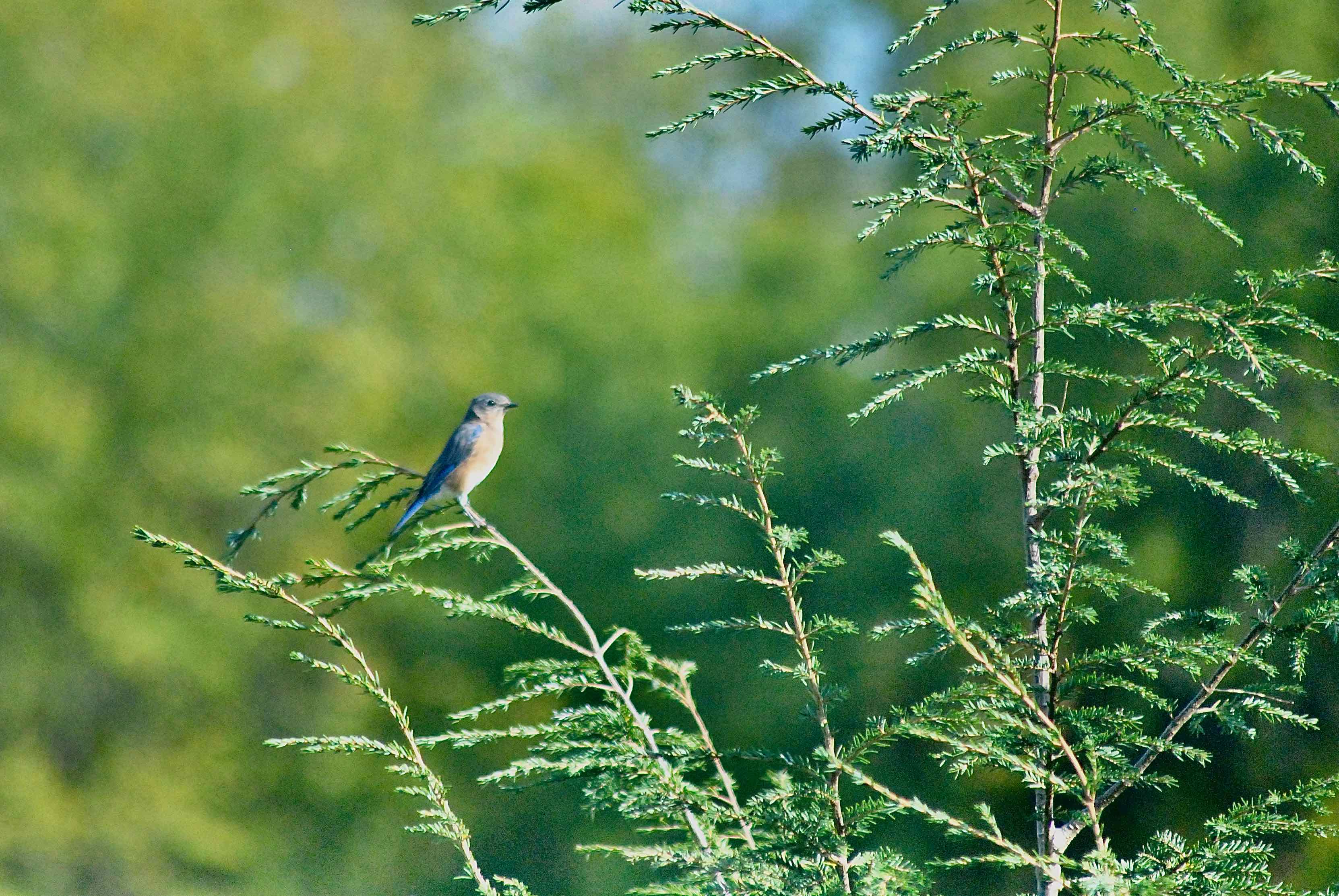
Eastern Bluebird, photographed at Middle Creek Wildlife Management Area, Kleinfeltersville, Pa., in October 2015.
The story of the eastern bluebird, Sialia sialis, is one of both success and failure. It nearly became extinct in the last century because of our limited knowledge of the ways of nature.
Now, it's a fairly common sight throughout most of the United States and Canada east of the Rockies thanks in large measure to conservation efforts by private citizens.
The one hole in the donut, so to speak, is South Florida, particularly southeastern Florida, where the bird has become extirpated — locally extinct — or nearly so, because of loss of habitat. Eastern bluebirds can still be found in Collier and Lee counties, however. You'll notice we "cheated" a bit; the photographs on this page were taken in central Pennsylvania rather than in the Sunshine State, but the story of this little songbird is our story too.
It is a beautiful bird, bright blues on top, rusty reds underneath, fading to white. As with many species, the colors are more pronounced in males than in females. They are small birds, with a body length of maybe eight inches and a wingspan of a foot. Their legs and tail are on the shorter side, their wings on the long side.
Mountain Bluebirds and western bluebirds are similar in looks, especially the western bluebird, but the range of those two species stays west of the Mississippi.
Meadows and other open areas along the edges of forests are their habitats. They nest in the cavities of dead trees, called snags, and that's where the decline of their population began. For whatever reason, in the early 1900s, forest managers decided it was good practice to remove snags rather than let them stand. On top of that, populations of exotic birds that also use tree cavities for nesting began to rise (brought in by us humans) and eastern bluebirds and other native species faced competition for fewer suitable sites. Add in the effects of pesticides toward the middle of the 20th century and the eastern bluebird was nearly wiped out.
About the same time, development in Florida, particularly South Florida, began to explode. Forests were logged; open meadows, critical to the eastern bluebird, became choked with vegetation as naturally occurring fires were suppressed. Farther north, the eastern bluebird population began to recover as private landowners built nest boxes for them on their property. In South Florida, the bird moved toward extinction.
In the late 1990s, the National Park Service attempted to restore the eastern bluebird population within Everglades National Park by moving some breeding pairs to Long Pine Key from the nearby Big Cypress National Preserve. Follow-up studies found the number of individuals dropping to about 30 from 47 that were introduced. The reasons aren't clear but the effects of fire suppression might be one factor.
We've heard reliable reports of eastern bluebird sightings in Palm Beach County in recent years, but they are still at best rare birds in this part of South Florida.
Bugs and berries make up most of the eastern bluebird's diet. Occasionally they'll take small lizards, tree frogs and other larger items. They'll forage by perching, then going to the ground after a bug, hovering or in flight. Males win the hearts of females through song, display, and occasionally feeding their would-be mates. They nest in tree cavities or nest boxes. Females lay 3-7 eggs, which take about two weeks to hatch. Both parents care for their offspring, which fledge in two to thee weeks. Bluebirds can have as many as three broods a year, with older offspring often caring for their younger siblings.
Eastern bluebirds are members of Turdidae, the thrush family.
